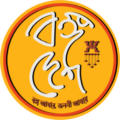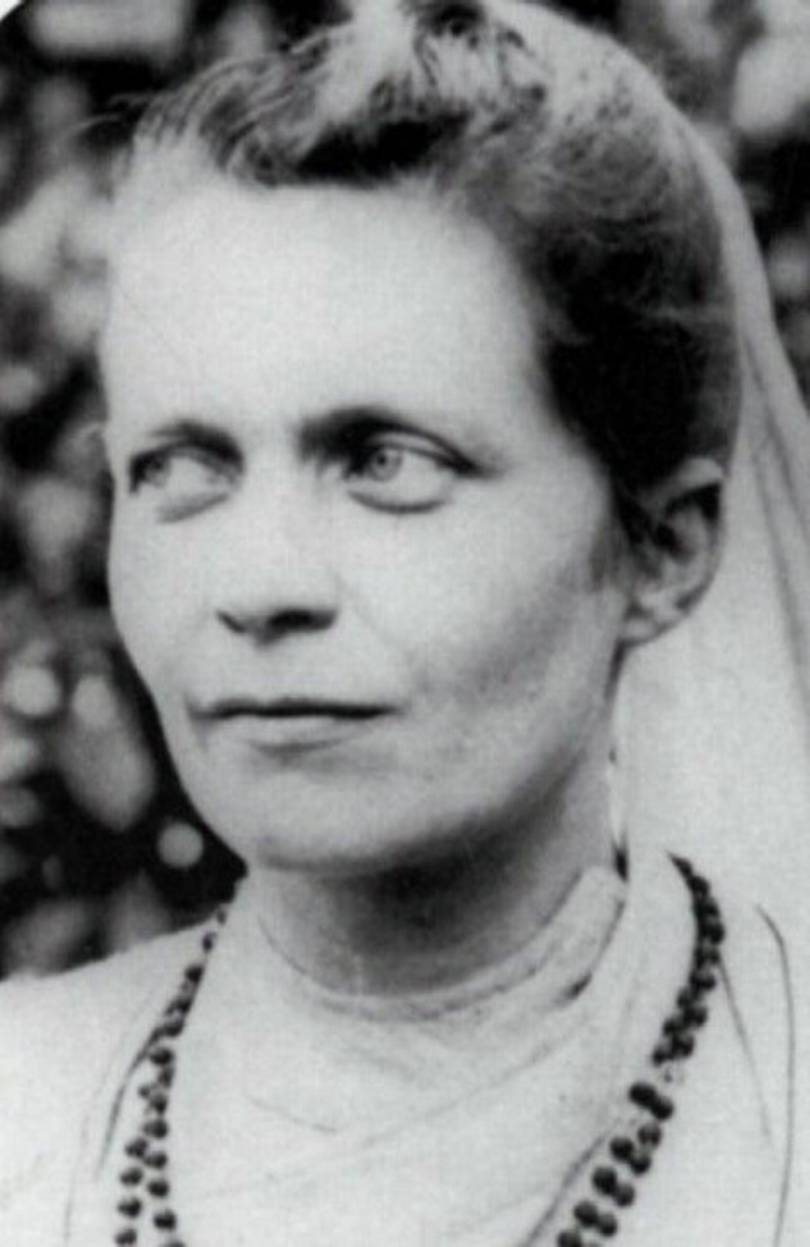(After the Second Part…)
Sister Nivedita was a great social thinker as well as a politician. She wandered India to awaken the mass of India by inspiring their nationality, i.e.; unity in diversity. She concentrated on the unity of the cities of India and wrote: –“The most perfect visible symbol of our unity is undoubtedly a city.” (The Civic and National Ideals, Sister Nivedita, p.10) Swamiji passed away on 4 July 1902 and Nivedita started travelling India on and from 21 September. Her keen inner sight appeared to express thus: –“The city as a whole is but a visible symbol of this life behind it. Nor does this mean only of the life at present behind it. It is determined by the sum of the energy of all its creators, past as well as present.”(The Civic and National Ideals, Sister Nivedita, p.9).
Nivedita’s pen and speeches were mighter than the sword. She would never hesitate to pierce the right point in a right situation. She was then like a bare sword. But she was a genius indeed who tasted the Eternal Bliss through Vedantic realization. If not, then how a human body could do multiple deeds up to the optimum, in such a short span of life without applying miracles (siddhi)? She remained starved or underfed and continued her huge task with no pause. Nivedita was the realizer of the Eternal Truth and mingled her all thoughts and ideas with Eternity. And, she applied her realization thus :- “From end to end of the peopled earth, we shall find, wherever we look, that man makes his home of a surpassing sanctity to himself and others, and the divine mingled with the domestic fire on every hearth.” .”(The Civic and National Ideals, Sister Nivedita, p.16).
In 1835 Macaulay’s minute was published by the Baptist Mission, Calcutta. The Anglicized education gave birth to typical middle class clerks who were Indian by blood but English by their tastes. This education made those clerks to think them inferior than the racist English. Stereotype Bengali babus emerged. They were lacking nationality, unity and uplift. It was stated by Swami Vivekananda that enslaved nation could not imagine of emancipation in its every sphere of life. Nivedita also was in tune with this. She grasped the wave-length of Swami Vivekananda and started to rebuild India. The dimension of her thoughts expanded. Her keen intellectual understanding of Indian culture gave her the capability of expressing the clear, convincing and uplifting words. And, in this context, it is noteworthy that she adopted India certainly not as an outsider rather she became identified with India. Hence she demonstrated the highest spiritual ideals with the daily duties of domestic, social and national life. She opined that without spiritual ideal a nation could not progress rather it would decline. She gave clear-cut definition of monk in her book i.e.; Dharma and Religion-“It is not his gerua cloth, but his selflessness, that makes monk. There may be monks of science and learning, monks of art and industry, monks of the public life and service, and monks for the defence of the defenceless.”
Nivedita stressed on nation-making as she was not satisfied with her girls’ school only. She believed that the idea of nationality of India would make Indians united though they diversely differed. And, this would be the sword of India to chase the British. She was very much keen to realize the political situation of India. She wanted to work in her own way. She dreamt much ahead than her time. Although she was of Ramakrishna Order but she had to leave this religious organization officially due to her political attachment. On the lecture-tours in south India, when she was in Madras, ‘The Hindu’, the leading newspaper, started to publish the news of her inspiring and fiery speeches on political ideas which spreaded over India and the national freedom fighters as well as revolutionaries got oxygen from it.
The Belur Math was then just in its primitive stage. The monks were terrified by that situation made by Nivedita’s speech in south India. To protect the Belur Math from the anger of British Government, Swami Brahmananda, asked Nivedita to come and meet him. Nivedita met him. He suggested her to be satisfied with her girl’s school only and he directed Nivedita either to keep apart from politics or to leave the Ramakrishna Mission forever. Nivedita was stunned. Nivedita approved firmly none of his commands and stuck to her strong determination. As she was much identified with Indian politics, she could not be detached from it. Rather death was better to her than to leave politics as she was like a bare sword.
Nivedita would feel the necessity of national unity of India. It was not an end of that conversation. Swami Brahmananda told Nivedita to donate all her earnings which she had collected for her school. Although Nivedita was not bound to donate her earnings but she donated all to the Ramakrishna Mission excluding the expenses for her basic need ; i.e.; meal, dress etc. Swami Brahmananda made her publish a column on this topic in a leading newspaper depicting that Nivedita had detached herself with the Ramakrishna Mission according to her own will. But it was not disclosed or published that Swami Brahmananda had made her leave the Ramakrishna Mission, deliberately. Sri Girija Shankar Roy Chaudhury wrote –
নিবেদিতার কথা শুনিয়া স্বামী ব্রহ্মানন্দ বলিলেন, ‘তবে তুমি এক কাজ কর। এক খোলা চিঠি লিখিয়া কলিকাতার প্রধান প্রধান সংবাদপত্রে ছাপাইয়া দাও এবং ঐ পত্রে স্পষ্ট করিয়া লেখ যে, তুমি স্বেচ্ছায় মঠ ত্যাগ করিয়া যাইতেছ।’
নিবেদিতাকে মঠ ছাড়িতে বাধ্য করা হইল। ইহাতে দোষের কিছুই নাই, কিন্তু সেই সঙ্গে বলা হইল – ‘লেখ যে, তুমি স্বেচ্ছায় মঠ ছাড়িয়া যাইতেছ। অর্থাৎ আমরা তোমাকে তাড়াইয়া দিতেছি না।’ ইহাতে স্বামী ব্রহ্মানন্দ ও মঠের তৎকালীন সন্ন্যাসীদের চরিত্রে যে দুর্বলতা প্রকাশ পাইল তা সত্যই দুঃখের বিষয়। কেননা, এই দুর্বলতাটুকু নিশ্চয় নিবেদিতার চক্ষু ও মনকে এড়াইয়া যাইতে পারে নাই।
নিবেদিতাকে যেরূপ বলা হইল, তিনি তাহাই করিলেন। নিবেদিতার বন্ধু মিঃ রাটক্লিফ তখন ‘দি স্টেটসম্যান’ পত্রিকার সম্পাদক ছিলেন। সুতরাং ‘স্টেটসম্যান’ পত্রিকায় ১৯০৩ খৃষ্টাব্দের জানুয়ারী মাসে নিবেদিতার খোলা চিঠি অনায়াসেই ছাপা হইয়া বাহির হইল।
এখন বাকী রহিল শুধু টাকাপয়সার হিসাব। নিবেদিতা মঠের জন্যই হউক অথবা তাঁহার স্কুলের জন্যই হউক কিছু চাঁদা সংগ্রহ করিয়াছিলেন। বেলুড় মঠের সন্ন্যাসীরা নিবেদিতার নিকট ঐ চাঁদার টাকা অতি সত্বর চাহিয়া বসিলেন। নিবেদিতা সাময়িক গ্রাসাচ্ছাদনের জন্য অতি সামান্য কিছু রাখিয়া বাকী সমস্ত টাকাই স্বামী ব্রহ্মানন্দকে ফিরাইয়া দিলেন। যে টাকা ফিরাইয়া দিলেন, তাহার পরিমাণ চারিশত স্টার্লিং পাউন্ড।
After that incident, though she kept herself apart from the Ramakrishna Mission, she belonged to Ramakrishna-Vivekananda till her last breath of life. After a long period of that incident Nivedita wrote to Miss McLeod (06/11/1904) stating that Swami Brahmananda had not taken his heart away from her. Such generous was she!
It was not a matter of joke that an Irish lady of nineteenth century, at the age of only 23, could write a series of six papers on women’s rights. She was then a true backer of women’s suffrage in the year 1890 and it was noticeably found that those papers written by Margaret covered the basic needs for women to put their choice so that they could live a meaningful and sensible lives and have well-furnished homes with hygienic atmosphere. But it is remarkably important that in those papers, voting rights of women was not exposed. Such a mature writer was Margaret! In India, Nivedita wrote several writings. Her famous book “The Web of Indian Life” was not only written by her but she became one with the Indian life. In all her writings she emphasized on the beauty and virtue. She churned out the selflessness, righteousness, purity, perseverance, piousness and bravery of ancient male and female characters of India in her treasured books, i.e.; “The Cradle Tales of Hinduism” and other.
Truly speaking, Sister Nivedita was a superfine combination of geniosity (genius), beauty, virtue and glow culminating in unique splendour. Abanindranath Tagore wrote quite aptly –
সন্ধ্যে হয়ে এল, এমন সময়ে নিবেদিতা এলেন। সেই সাদা সাজ, গলায় রুদ্রাক্ষের মালা, মাথার চুল ঠিক সোনালী নয়, সোনালী রুপোলীতে মেশানো, উঁচু করে বাঁধা। তিনি যখন এসে দাঁড়ালেন সেখানে, কি বলব যেন নক্ষত্রমন্ডলীর মধ্যে চন্দ্রোদয় হল। সুন্দরী মেমরা তাঁর কাছে যেন এক নিমেষে প্রভাহীন হয়ে গেল। সাহেবরা কানাকানি করতে লাগল।
উডরফ ব্লান্ট এসে বললেন, “কে এ?”
তাঁদের সঙ্গে নিবেদিতার আলাপ করিয়ে দিলুম! ‘সুন্দরী সুন্দরী’ কাকে বল তোমরা জানিনে। আমার কাছে সুন্দরীর সেই একটা আদর্শ হয়ে আছে। কাদম্বরীর মহাশ্বেতার বর্ণনা – সেই চন্দ্রমণি দিয়ে গড়া মূর্তি যেন মূর্তিমতী হয়ে উঠল। ……নিবেদিতা যেন সৌন্দর্যের পরাকাষ্ঠা। সাজগোজ ছিল না, পাহাড়ের উপর চাঁদের আলো পড়লে যেমন হয় তেমনি ধীর স্থির মূর্তি তাঁর। তাঁর কাছে গিয়ে কথা কইলে মনে বল পাওয়া যেত। নিবেদিতার কি একটা মহিমা ছিল; কি করে বোঝাই সে কেমন চেহারা। দুটি যে দেখিনি আর, উপমা দেব কি।
Purity, perseverance, piousness, generosity and flame-like appeal always manifested in her body showing her whiter. She was made of condensed thoughts. It looked like an idol of deep thoughts moving here and there. Certainly Nivedita was a dedicated splendour who was ever in communion with the eternity.
References
- Bhagini Nivedita – Prvrajika Muktiprana, Sister Nivedita Girls’ School, 2012, Kolkata.
- Margot Sister Nivedita of Vivekananda – Reba Som, Penguin Random House India, 1st. 2017, Viking.
- Nivedita Smriti – Edited by Biswanath Dey, Anirban Prakashani, 1372 BS., Kolkata.
- Sister Nivedita – Prvrajika Atmaprana, Sister Nivedita Girls’ School, 2014, Kolkata
(Completed)…


